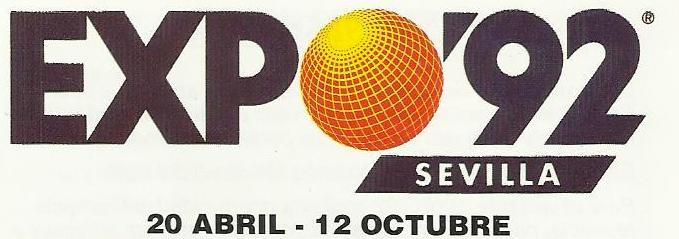Álvaro Santos

The year 1992 marked a before and after in the urban history of Seville. The celebration of the Universal Exhibition of Seville, on the occasion of the V Centennial of the Discovery of America, led to numerous transformations for the city.
The Island of the Cartuja, located between the two arms of the Guadalquivir River, was the enclave that housed the Exhibition. Until then, the urban development of this area was null, except for the Monastery of the Cartuja as the only singular element of the place and that was built between the XV and XVI centuries. For the Exhibition, numerous pavilions and buildings were built, the Way of the Discoveries and another series of avenues that articulated the territory, taking the place the appearance of the framework of a medium type city. In addition, it was necessary to start up a set of hydraulic, electrical, gas and telecommunications network installation works. Currently, some of these buildings have disappeared and others are still in full use. The Isla de la Cartuja has become an area of technological and business development for the city. However, Seville does not finish taking advantage of it to the extent that there is no opening to the city or tourism. A relevant fact is the absence of housing, despite having pharmacies, nurseries…
At that time, Seville lacked the necessary infrastructure to guarantee the viability of the project, so it was necessary to provide the city and its surroundings with the adequate infrastructure to ensure the normal development of this important event. These needs were identified in the General Plan of the Exhibition, approved on February 14, 1986.
Regarding transport infrastructure linked to Expo’92, the double Seville-Madrid connection stands out on the one hand through the unfolding of the N-IV highway, leading to the current Autovía del Sur highway, and the High Speed that connects the Andalusian capital with Madrid in just two and a half hours and that was a great challenge to be the first high-speed line that was built in Spain. Today these infrastructures are still key in the relationship between the city and the capital of the country. On the other hand, the highways of the interior network of Andalusia that allowed to configure the internal relations of the Autonomous Community connecting the capitals of the region with Seville stand out. This network was configured by the A-49 that joined Sevilla with Huelva and the A-92 that linked Seville with Granada and with Malaga due to its detour in Antequera. The connection Seville – Cádiz was already resolved by the toll road to Puerto Real.
In terms of urban transformation, 75 kilometers of new roads were built between the seven rounds and four new avenues that contributed greatly to solving traffic problems, as well as ending the isolation suffered by many neighborhoods. In addition, the new SE-30 bypass has had a great influence in the metropolitan area leading to a spectacular development of areas such as the Aljarafe.
Another great milestone in the territorial and urban transformation of the city was the construction of six new bridges over the Guadalquivir River. On the one hand, we mentioned the two bridges belonging to the exterior round, the Alamillo bridge -located to the north- and the V Centenario bridge -located to the south-. On the other hand, the bridge of the Barqueta, the bridge of the Christ of the Expiration, the catwalk of the Cartuja and the bridge of the Delights, which replaced the bridge of Alfonso XIII, have a different character, limiting its function to the urban order.
Several actions were carried out to recover the river. On the one hand, the Chapina plug was removed, built as a protection against the frequent floods and floods of the Guadalquivir. In addition, the elimination of the railway lines of the Torneo Street allowed the creation of an avenue that ran parallel to the river, returning to the city seven kilometers of urbanized river bank, being at present one of the main arteries that surround the center of the city. the city.
The railway network of the city also underwent a great transformation. Thanks to the burial of the roads that ran under the San Bernardo Bridge and that allowed the arrival of trains coming from Cádiz in the south, the division of Seville was put to an end in two parts separated by the railway line. As a result of the transformation of the railway network, the current Santa Justa Station was built, where the new high-speed line linking Seville with the country’s capital would arrive.
Finally, it is worth mentioning highlighting the transformation experienced by the Seville airport, multiplying its capacity, currently receiving approximately four million passengers per year.
In order to comply, the impact of the Universal Exhibition of Seville, as we have seen, was felt beyond the Pavilions and the venue that hosted the Exhibition. Thus, the city and its surroundings were equipped with new infrastructures that made it possible to improve regional accessibility, especially in western Andalusia. In addition, communications between Seville and its surroundings were improved. All these transformations, evidently, supposed a growth of the Andalusian economy and an important creation of jobs. With all this, Seville was ready for the entry of the new millennium.

